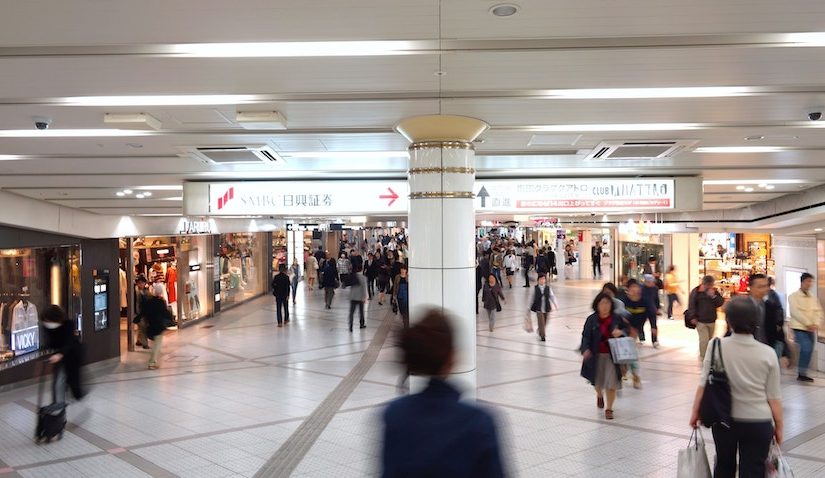Navigation in Areas Beyond the Scope of GPS Signals
In the days before online map services such as Google Maps could be used on our smartphones, before heading out to a new destination, one would copy a map from a book or print out a copy of an online map from a computer. These days, for navigation purposes a smartphone map shows us where we are in real time, so such advance preparations are not necessary.
However, once inside a building, you are transported back to the world of nearly 20 years ago when smartphones and online maps were not available. This is because the navigation function cannot be used beyond the reach of the GPS signal. Reading the map and studying the positional relation between your current location and your destination, you have to figure out the route in your own head. In a time when we have all become so used to using online map navigation devices, this does seem very inconvenient.
As Japan has many buildings and underground malls, we often encounter situations when we cannot rely on GPS. However, indoor navigation systems utilizing a smartphone’s various sensors have begun to appear that can be used in such an environment.
Yahoo: Positioning with Geomagnetic Disturbances
Yahoo Japan have a smartphone app called Yahoo! Map which incorporates indoor positioning technology developed by Finnish company IndoorAtlas. This provides a navigation function that can be used indoors where GPS signals cannot be received.
This technology can pinpoint your current location by comparing the geomagnetic data obtained from magnetic sensors in the smartphone, with a previously measured pattern of geomagnetic disturbance (a unique fingerprint) created by the steel frame of the building. This method can distinguish between a first and second basement level, and recognize vertical movement, so it is ideal for navigation in buildings and underground malls. However, because it is necessary to create a fingerprint database in advance, facilities that can provide this navigation service are limited.
Certainly, creating a database before starting the service is time-consuming. However, once the database preparations are done, the user only needs their smartphone, and the navigation service provider does not need to do anything. One big advantage is that unlike navigation services that use radio waves for positioning, such as Bluetooth and Wi-Fi, there is no need to continuously maintain a beacon…
Osaka Metro Uses Visible Light Communication and Accelerometers
Osaka Metro provides an “Osaka Metro Group Navigation App” for smartphones which has an indoor navigation function for use inside subway stations. This differs from the technology of Yahoo Japan in that it determines the present location using visible light communication technology and then obtains information for one’s travel route by making full use of the smartphone’s atmospheric pressure sensor and accelerometer. This system was developed by Panasonic and Panasonic Systems Japan.
The first necessary step of determining the present location is done with LinkRay optical ID technology, which uses the blinking pattern of the LED light source for data communication. When the smartphone’s camera reads a map illuminated with a LinkRay system compatible LED light, the blinking pattern is decoded to obtain the location information. When you want to find your way, you set this location as the starting point.
As you start walking toward your destination, the degree of movement is estimated with information obtained from your smartphone’s accelerometer. At the same time, it seems that any accumulated calculation errors will be corrected by using the atmospheric sensor. Apparently, the degree of movement can be judged with high precision, even when walking in a crowded place or moving up and down stairs or escalators.
As with Yahoo Japan’s navigation function there is no need for a beacon like Bluetooth, so it is easy to install.








